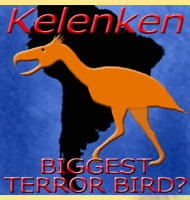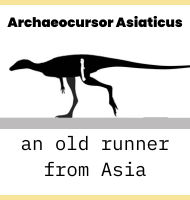In Depth
The name Iberomesornis is often translated to English as ‘Spanish intermediate bird’, but the first part of the name is actually in reference to the Iberian Peninsula (also just called Iberia) which includes not only Spain, but Portugal, Andorra and part of southern France as well. At the time of writing however, Iberomesornis fossils are still only known from Spain.
The intermediate part of the name Iberomesornis is a reference to how Iberomesornis are considered to represent an intermediate stage in bird evolution before the appearance of, more advanced forms closer to modern birds. The ancestors of birds are believed to have appeared at least as far back as the late Jurassic with forms similar to Archaeopteryx. Although possessing wings, these even more primitive forms had long dinosaur like tails, shoulder positions with a more sideways alignment which limited the range of motion of the wings and lacked a bony sternum (cartilaginous sternums in some are a possibility but this cannot be definitely proven at the time of writing).
The most obvious difference between more primitive forms like Archaeopteryx and Iberomesornis is that Iberomesornis lacked the long tail, instead having a short pygostyle that was the main support for the tail flight feathers. The feet were also much better adapted for perching on branches than earlier forms and the wing claws were also reduced to just one, indicating an overall switch to perching as opposed to clinging to trunks. The shoulders were also better aligned to provide a far greater range of motion than that of more primitive forms, meaning a much more efficient flight stroke of the wings. One area that is still lacking though is the skull which so far has still not been found. Iberomesornis is usually recreated with teeth in the beak, and odds are that this is correct since most birds seem to have retained teeth all the way to the late Cretaceous and even beyond. But the lack of knowledge over a specific kind of teeth as well as a lack of known stomach contents means that it is impossible to say what Iberomesornis ate. The primitive nature however, small size as well as other known prehistoric birds suggests that an insectivorous diet is probably the most likely. Insects would allow for a high protein and therefore high energy diet, and most kinds of advanced animals tend to select an animal protein diet before evolving and diversifying towards other diets.
At the time of the initial discovery and description of Iberomesornis the broader understanding of Mesozoic birds was still not that clear as only a few key isolated birds, mostly from the late Cretaceous were known. For this reason Iberomesornis was placed outside of the Ornithothoraces group, the same group that includes modern birds. Since the 1990s however new fossil beds, particularly some from the now world famous deposits in China where feather preservation is common, has helped to fill in many evolutionary gaps, particularly those of the early Cretaceous at roughly the same time and a little before and beyond the time of Iberomesornis. As such a much more complete picture can be put together which has resulted in Iberomesornis now being placed within Ornithothoraces as a primitive form.
Further Reading
- Unusual Early Cretaceous birds from Spain - J. L. Sanz, J. F. Bonaparte & A. Lacasa - 1988. - A New Order of Birds (Class Aves) from the Lower Cretaceous of Spain”. In Jonathan J. Becker (ed.) - J. L. Sanz & J. F. Bonarparte - 1992. - An isolated bird foot from the Barremian (Lower Cretaceous) of Las Hoyas (Cuenca, Spain) - J. L. Sanz & A. D. Buscalioni - 1994. - Iberomesornis romerali (Ornithothoraces, Aves) re-evaluated as an enantiornithine bird - Paul C. Sereno - 2000.








